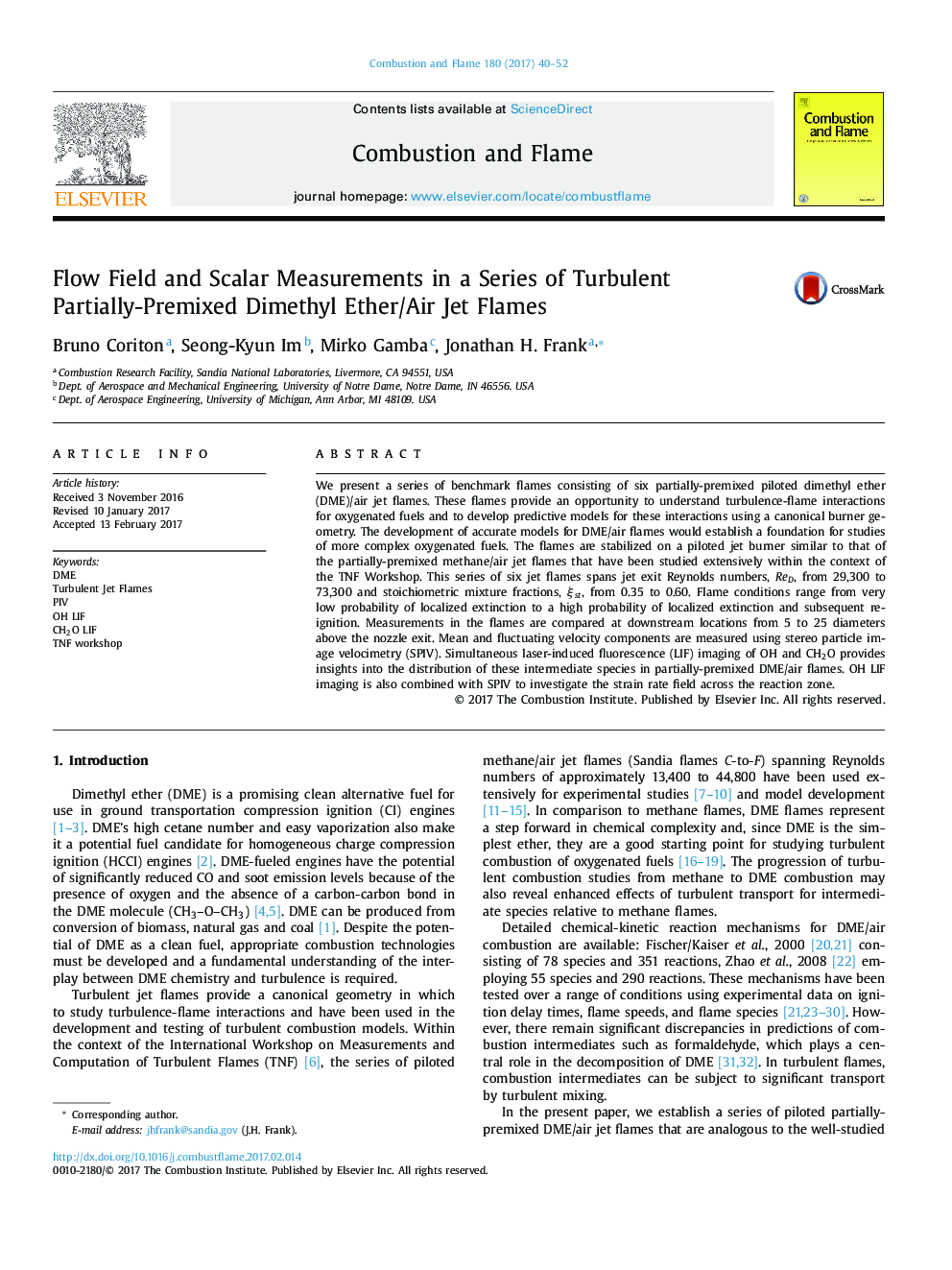| Article ID | Journal | Published Year | Pages | File Type |
|---|---|---|---|---|
| 4764374 | Combustion and Flame | 2017 | 13 Pages |
Abstract
We present a series of benchmark flames consisting of six partially-premixed piloted dimethyl ether (DME)/air jet flames. These flames provide an opportunity to understand turbulence-flame interactions for oxygenated fuels and to develop predictive models for these interactions using a canonical burner geometry. The development of accurate models for DME/air flames would establish a foundation for studies of more complex oxygenated fuels. The flames are stabilized on a piloted jet burner similar to that of the partially-premixed methane/air jet flames that have been studied extensively within the context of the TNF Workshop. This series of six jet flames spans jet exit Reynolds numbers, ReD, from 29,300 to 73,300 and stoichiometric mixture fractions, ξst, from 0.35 to 0.60. Flame conditions range from very low probability of localized extinction to a high probability of localized extinction and subsequent re-ignition. Measurements in the flames are compared at downstream locations from 5 to 25 diameters above the nozzle exit. Mean and fluctuating velocity components are measured using stereo particle image velocimetry (SPIV). Simultaneous laser-induced fluorescence (LIF) imaging of OH and CH2O provides insights into the distribution of these intermediate species in partially-premixed DME/air flames. OH LIF imaging is also combined with SPIV to investigate the strain rate field across the reaction zone.
Keywords
Related Topics
Physical Sciences and Engineering
Chemical Engineering
Chemical Engineering (General)
Authors
Bruno Coriton, Seong-Kyun Im, Mirko Gamba, Jonathan H. Frank,
